President Donald Trump’s momentous decision to strike key Iranian nuclear facilities on Saturday leaves Washington and the world in a state of suspense. Following a spectacularly successful Israeli military operation against Iran over the past week, the U.S. attack compounds the crushing reversals to Iran’s regional power projection over the past year. But the American intervention also amplifies the fluidity about how this crisis may evolve, and what it means for Tehran, Washington, and the world. On the day after, the unfolding situation is beset with uncertainty. Consider these three unanswered questions.
1. Did the US ‘finish the job’?
The U.S. strike was intended to deliver the death blow to Iran’s nuclear ambitions by disabling installations that the Israeli Air Force did not have the capabilities to eliminate on its own. This included the Fordow Fuel Enrichment Plant, a heavily fortified installation built into the side of a mountain near the Iranian city of Qom, and two other sites. Without U.S. weapons and bombers, Israel’s military campaign might only set back Tehran’s nuclear ambitions by a year or two. That put pressure on Trump to “finish the job,” as an Israeli billboard urged.
Whether the U.S. strikes achieved that ambitious aim is highly uncertain. The Trump administration has declared that the mission “completely and totally obliterated” Iranian enrichment capabilities, and satellite imagery has corroborated that the strikes did some damage. However, Pentagon officials have acknowledged they cannot be certain whether the facilities have been destroyed, and Rafael Grossi, the head of the International Atomic Energy Agency, is insisting that “no one, including the IAEA, is in a position to assess the underground damage at Fordo.” For their part, Iranian officials are insisting that the damage “is not irreversible.”
Moreover, in addition to the questions about the extent of the damage inflicted by U.S. strikes, there are other “known unknowns” that warn against any temptation to declare mission accomplished. Since Trump exited the 2015 nuclear deal with Iran during his first term, Tehran has steadily reduced its adherence to the limits imposed by the deal on its enrichment activity and the requirements for cooperation with the International Atomic Energy Agency. As a result, Iran has amassed a dangerously large stockpile of enriched uranium, at least some of which it still retains, according to Vice President JD Vance.
Among the known unknowns are the centrifuges that Iran is known to have produced but not installed, as well as the possibility of a third enrichment facility, previewed by Tehran on the eve of the Israeli strikes. Without inspectors on the ground, the challenge of assessing Iran’s capabilities and ensuring the durability of the setbacks imposed by the war will become even more challenging.
2. How will Tehran respond?
In the aftermath of the American strikes, the world is braced for Iranian retaliation. Iranian officials have described the U.S. attack as “a grave crime” and promised to “defend Iran’s territory, sovereignty, and people by all means necessary.”
Tehran has frequently bided its time and sought to calibrate its responses to avoid a precipitous spiral of escalation.
The Islamic Republic’s dogma emphasizes retaliation. In practice—as I pointed out in The Washington Post five years ago, after the Trump administration assassinated an influential Iranian general—Tehran has frequently bided its time and sought to calibrate its responses to avoid a precipitous spiral of escalation. That prudence may well prevail today, given Iran’s immense vulnerability to waves of additional Israeli and American airstrikes.
During the first week of the war, Tehran demonstrated relative restraint, reflecting the remarkable efficacy of Israeli strikes on its nuclear and military infrastructure as well as an evident and understandable Iranian preference to avoid precipitating U.S. intervention. That latter consideration is now irrelevant. Yet, Iranian leaders still face a paucity of good options to reliably deter further attacks.
Already, Israel has significantly eroded Iranian missile launch capabilities. Iran’s attempted drone swarms have been neutralized with ease. Its once-fearsome proxy network has been decapitated and its arsenal eroded by Israeli campaigns in Gaza and Lebanon. Tehran could unleash small-scale terrorist attacks that might avenge its wounded defenses and cyberattacks on U.S. or Israeli infrastructure, but these could produce reciprocal measures that could undermine the regime’s precarious position with its citizens. Iran’s parliament quickly convened for a purely symbolic vote in favor of closing the Strait of Hormuz, but such a step would further cripple its own battered economy and jeopardize its fragile but valuable rapprochement with Saudi Arabia and the other Arab states along the Persian Gulf.
Iran’s leaders will inevitably consider escalating their nuclear activities and abandoning any pretense of cooperation with the international community, as the parliament has already signaled. But Tehran will have to weigh the shock effect of withdrawing from the Nuclear Nonproliferation Treaty against the likelihood of inviting a new round of U.S. and Israeli attacks, aimed at an expanded target set that might destabilize the regime. Instead, the regime is more likely to double down on a covert effort to reconstitute its nuclear program in secret.
In announcing the strikes, Trump demanded that Tehran “must now make peace,” adding that “if they do not, future attacks will be far greater and a lot easier.” Iranian leaders should take Trump’s threats more seriously today than they did before the attack. However, after investing decades and absorbing hundreds of billions of dollars in losses from sanctions to preserve this program and sustain their animosity toward the United States and Israel, they are unlikely to surrender, even in the wake of a devastating series of losses.
3. What are the chances of regime change in Iran?
Directly related to the issue of how Iran may respond is the question of the future of Iran’s ruling system, a unique amalgamation of theocratic and representative institutions that was put in place after the 1979 revolution. U.S. officials have insisted that Saturday’s strike was not intended to promote regime change, and both the U.S. and Israeli target sets have remained carefully focused on nuclear and military sites. Still, Iranian leaders are steeped in an especially paranoid strain of anti-Americanism, and they are unlikely to appreciate the distinction. Every decision that they make in the midst of this crisis will be informed by their determination to hang onto power and prevent the collapse of their unique theocratic system.
This existing system will almost certainly prevail in the near term. The Islamic Republic is widely unpopular among Iranians, and the system itself has been undergoing what I’ve described as “a slow-motion metastasis” for more than a decade. Unfortunately, for now, it’s the only game in town. Through the hardliners’ control of the judiciary and the security services, the regime has ensured that no alternative political force—even one advancing gradualist reform of the existing system—can advance meaningful change or pose a challenge to the current power structure.
Externally, the prospects for regime opponents are unpromising. Iran’s revolutionary regime has helped generate a large, wealthy, and well-educated Iranian diaspora in the United States and around the world. But their political alignments tend to be highly polarized. Any external opposition groups, such as the Mojahedin-e Khalq or the Pahlavi family, who ruled Iran for half a century until 1979, command intense but ultimately narrow bases of support.
Iranian leaders are already trying to stoke a rally-round-the-flag effect similar to the burst of nationalism that enabled the Islamic Republic not just to survive Saddam Hussein’s invasion in 1980, but to exploit the threat as a means of entrenching the regime and its institutions. That strategy will likely be less effective among a populace that is deeply disillusioned with the revolutionary state and fears the instability that its leaders have brought to their own doorstep. As chauvinism falls short, Iranian leaders have already begun to use this crisis to terrorize any rivals, demonize critics as unpatriotic, and further repress dissidents. For the Iranian people, this war is just the latest in a series of misfortunes they have endured since the 1979 revolution, with no light on the horizon in sight.
The Brookings Institution is committed to quality, independence, and impact.
We are supported by a diverse array of funders. In line with our values and policies, each Brookings publication represents the sole views of its author(s).
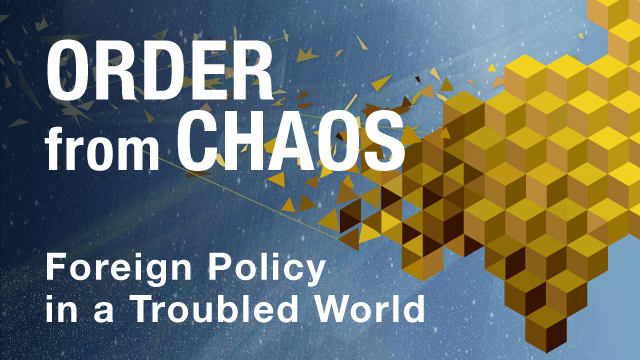

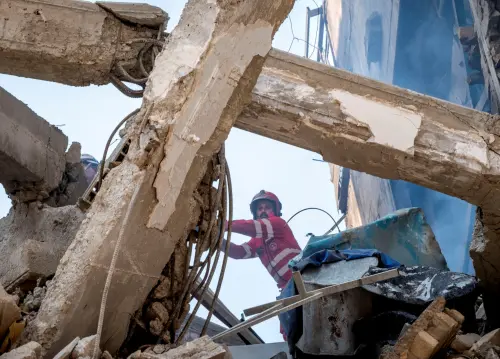
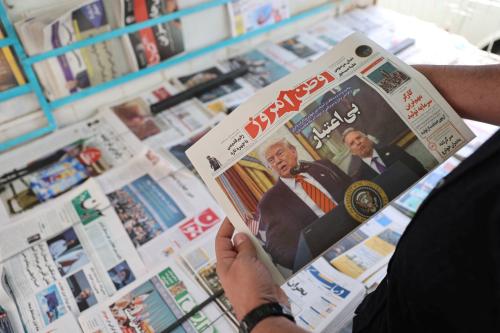
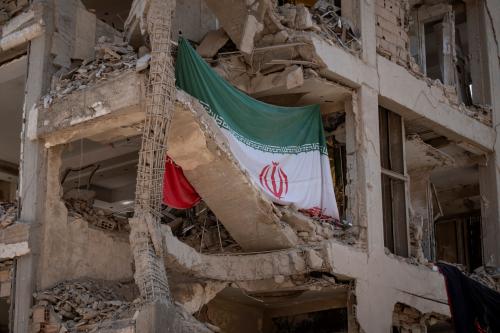
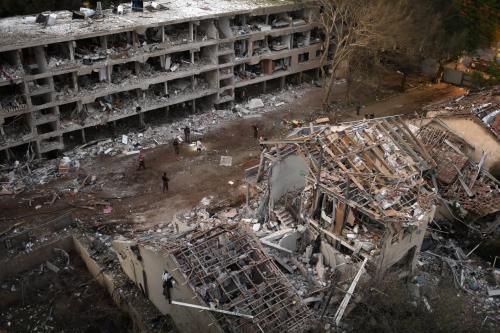
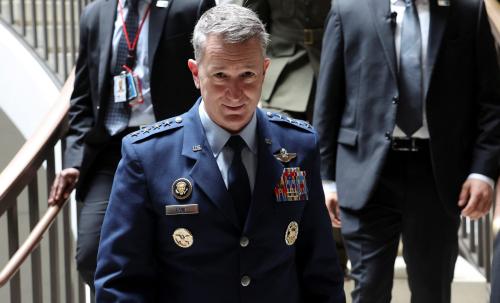
Commentary
The US attacks Iran: Three questions for the day after
June 22, 2025